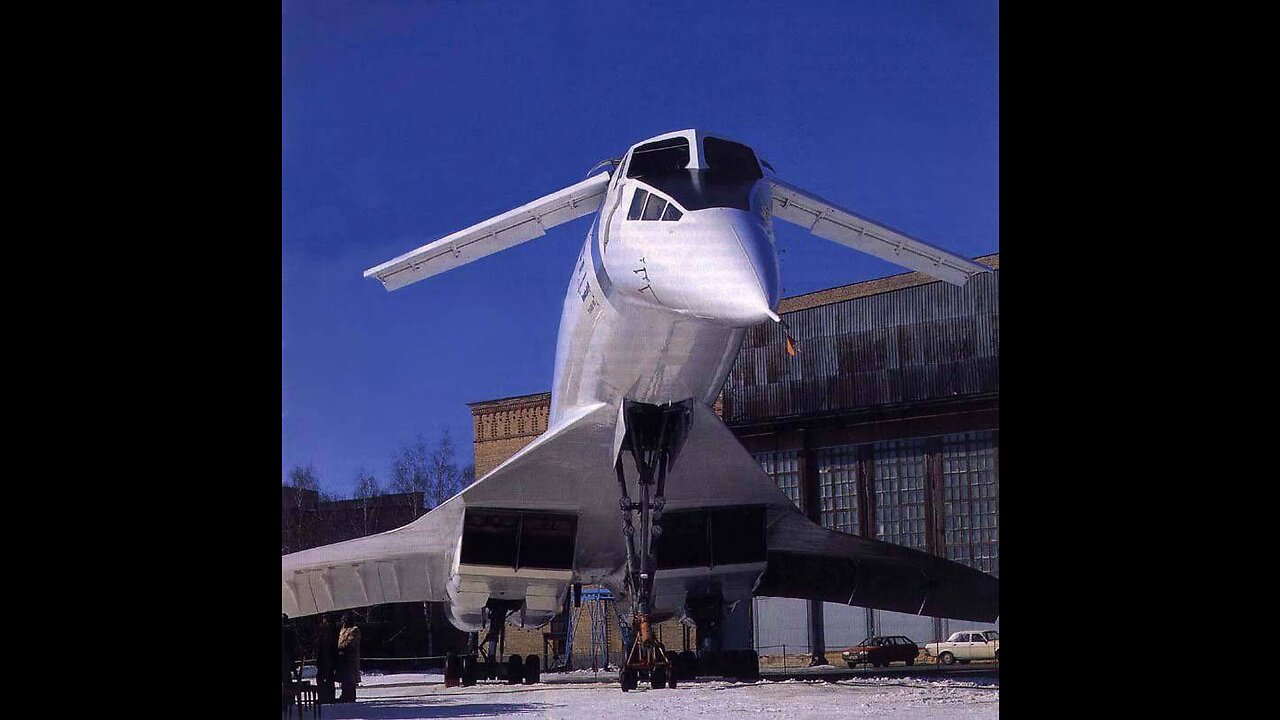Premium Only Content

Tupolev Tu-144 became a flying laboratory
The Tu-144LL with tail number 77114 was a unique aircraft of its kind, even among its peers: before receiving the LL marking, it was in fact called Tu-144D, i.e. modified.
In the mid-1980s it was used as a simulator for cosmonauts preparing for flights under the Buran program. The training of cosmonauts on the Tu-144 was possible due to the fact that the cabin of the Buran shuttle had a similar structure to that of an airplane, and the speeds and landing characteristics were comparable.
In the Tu-144 D variant this aircraft flew periodically until 27 February 1990.
In 1993 it was exhibited at the static exhibition of the MAKS air show, but later returned to flights again: although the plane did not take off for six years, NASA specialists were interested in using the search capabilities of the Tu-144 and so the first flight of the updated Tu-144LL took place on November 29, 1996.
The Tu-144 flying laboratory participated in a joint US-Russia flight research program to develop technologies for creating a new generation of supersonic passenger aircraft.
On the Tu-144LL the engines were replaced by upgraded twin-circuit turbojet engines used on the Tu-160 strategic bomber. The use of these engines made it possible to increase the speed from Mach 2.15 to Mach 2.3.
At the end of the research program, the United States wanted to purchase this aircraft but due to the fact that it was equipped with the engines of the then secret Tu-160 a relevant purchase agreement was not signed and the aircraft remained in Russia. Those who worked with this unique aircraft also opposed its move to the United States at the time.
-
 1:21:08
1:21:08
JULIE GREEN MINISTRIES
2 hours agoLIVE WITH JULIE
35.2K95 -
 1:11:46
1:11:46
Game On!
18 hours ago $0.52 earnedCan the Panthers Make HISTORY? Stanley Cup Final Game 6 Preview!
5.63K1 -
 27:11
27:11
DeVory Darkins
16 hours ago $3.76 earnedTrump drops CHILLING WARNING on blue cities Democrats make FATAL MISTAKE
8.09K55 -
 3:00
3:00
The Official Steve Harvey
19 hours ago $0.89 earnedThe Books That Changed My Life: Lessons from Steve Harvey on Purpose, Growth & Starting Now
7.89K7 -
 3:01
3:01
Rena Malik, M.D.
1 day ago $0.74 earnedWhat to do if it gets stuck?! (it happens!)
9.63K4 -
 LIVE
LIVE
PudgeTV
2 hours ago🟠 Mafia II: Definitive Edition | Live Playthrough | Gaming on Rumble
118 watching -
 17:14
17:14
Lacey Mae ASMR
14 hours ago $1.09 earnedMy Top 10 ASMR Triggers! (As an ASMRtist)
12.6K4 -
 5:06
5:06
UnboxRemedy
17 hours ago $0.74 earnedUNBOXING: Dimoo Quilt Phone Cases
10.3K2 -
![🟢 Live - Call of Duty [ Warzone ]](https://1a-1791.com/video/fww1/26/s8/1/L/8/a/U/L8aUy.0kob-small--Live-Call-of-Duty-Warzone-.jpg) LIVE
LIVE
Delnorin Games
2 hours ago🟢 Live - Call of Duty [ Warzone ]
93 watching -
 2:02:35
2:02:35
BEK TV
16 hours agoTrent Loos in the Morning 6/17/2025
15.7K